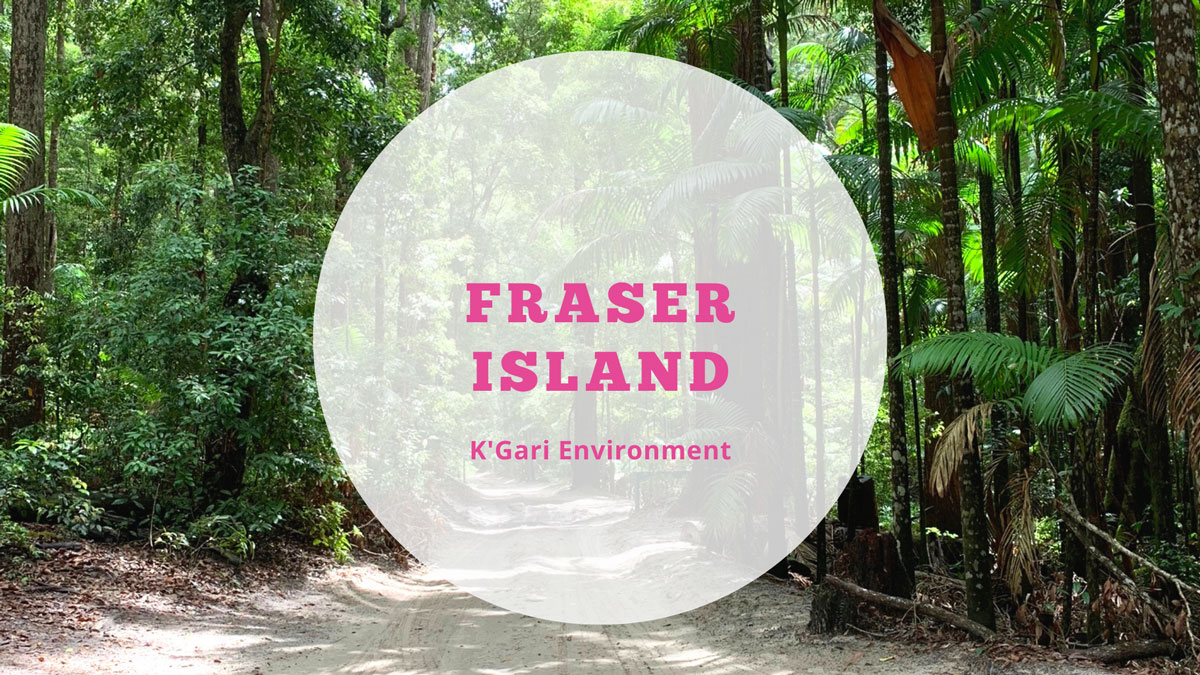
Fraser Island, K’Gari Environment
Fraser Island is made up of unique characteristics that makes it one of Australia’s most visited sites!
Fraser Island is the largest sand island in the World, with a giant sandmass 123km long and up to 25km wide. It was World Heritage-listed in 1992 for its areas of exceptional natural beauty, representing major stages of Earth’s history and ongoing ecological and biological processes involved in the Island’s ecosystems evolution.
Fraser Island is known for its exceptional beauty with its white beaches, coloured sand cliffs and over 100 freshwater lakes. The sand cliffs and sand blows are part of the longest and most complete age sequence of coastal dune systems in the world and its evolution is still ongoing! To add to the magnificence of Fraser Island, it is also the only place in the world where tall rainforests grow on sand dunes at elevations of over 200 metres.
How did K’Gari form?
Over the past 2 million years, currents and waves have been sweeping sand which accumulated in dunes parallel to the coast. Strong onshore winds blow loose sand inland to form high parabolic dunes which spread and engulf areas in their path.
Sandblows – what are they?
Fraser has 43 large sandblows! They form when vegetation on dunes are broken by fire, wind, storms, walkers and/or vehicles. The now loose sand is blown by onshore winds until stopped by the nearby vegetation, eventually covering it. They engulf everything in their path at rates up to one metre each year! Eventually the vegetation recovers and recolonises behind the advancing sandblow.
How are forests created on bare sand?
Plants growing on sand draw mineral nourishment from 2 surprising sources : they strip the fine mineral coating from grains of sand (turning the grains white!) and also absorb minerals from rainfalls! Decaying plants return these minerals to the sand so as successive dune layers form, it becomes able to support taller, more complex forests. Fraser forests are of international scientific interest!
K’Gari freshwater lakes
Three different types of freshwater dune lakes can be found on Fraser. Formed in sand, they have crystal clear or amber-stained waters (tannins from decomposing vegetation). They are low in nutrients and support limited aquatic life.
Perched lakes
Perched lakes are the most common on the Island. They develop when an impermeable layer of organic debris forms in a sand depression, enabling runoff and rainwater to collect. They are not influenced by groundwater. – ex: Lakes Boomanjin, Birrabeen and McKenzie (Boorangoora)
Window lakes
Window lakes are found at low elevation, forming where the ground surface dips into the water table. – ex: Lake Wabby
Barrage lakes
Barrage lakes form when a mobile sand dune dams a watercourse or encroaches on a lake. Lake Wabby is both a barrage and window lake. The world’s largest perched lake (Boomanjin) and some of the world’s highest lakes (Boomerang Lakes, 120m above sea level) are found on the Island.


